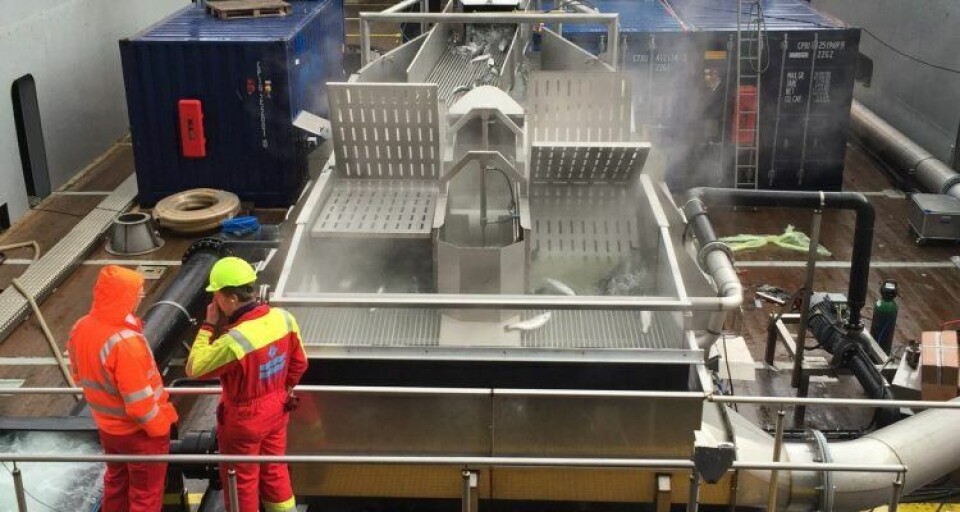
Allaying temperature tolerance concerns
Fears that lice might be becoming more tolerant of warm water treatments such as Optilicers and Thermolicers are misplaced.
So believes Nofima’s Bjørn Roth, who is running a project looking at the delousing effects and fish welfare issues related to using an Optilicer.
“It's the difference between sea temperature and the treatment water that is key, so it is quite natural that you have to turn up the temperature in autumn,” Roth tells kyst.no.
“We observed for example that on fine days in spring where the sun was shining, you have to keep turning up the temperature in the treatment water because surface ocean temperatures also rose,” he adds.
Kyst.no had heard that many producers have reported the need to increase the temperature in the treatment water in recent months, which has sparked a concern that lice are developing temperature tolerance with could, in the worst case scenario, be inherited.
Professor Tor Einar Horsberg at the National Veterinary School warned that this could be as serious as drug resistance. However, Roth is clear that this is not the case, pointing out that the method is only effective on the motile lice, not the sessile ones, lessening any possible resistance developing.
“Even if there is a selection process on the motile lice they will be outnumbered by the sessile lice, so the selection process will be diluted,” he explains.
“And if those motile lice that do not fall off the fish after treatment really do so because they are better genetically adapted to withstand high temperatures, then they will face enormous problems when winter comes and the water cools. That’s due to the fact that temperature tolerance has a lot to do with fat composition of the cell membranes. And this will be different in organisms that thrive at high temperatures compared to those that thrive at low temperatures. An organism is always temperature optimized in relation its surroundings, so I see no reason to overdramatize here,” Roth explains.
He also adds that it is not the warm water that is actually killing the lice.
“The lice let go because the muscles that create a vacuum in their suction device cannot handle the temperature change – similar when we get cold in your fingers, then they become very stiff and useless. The lice are then killed in the filter,” he says.























































